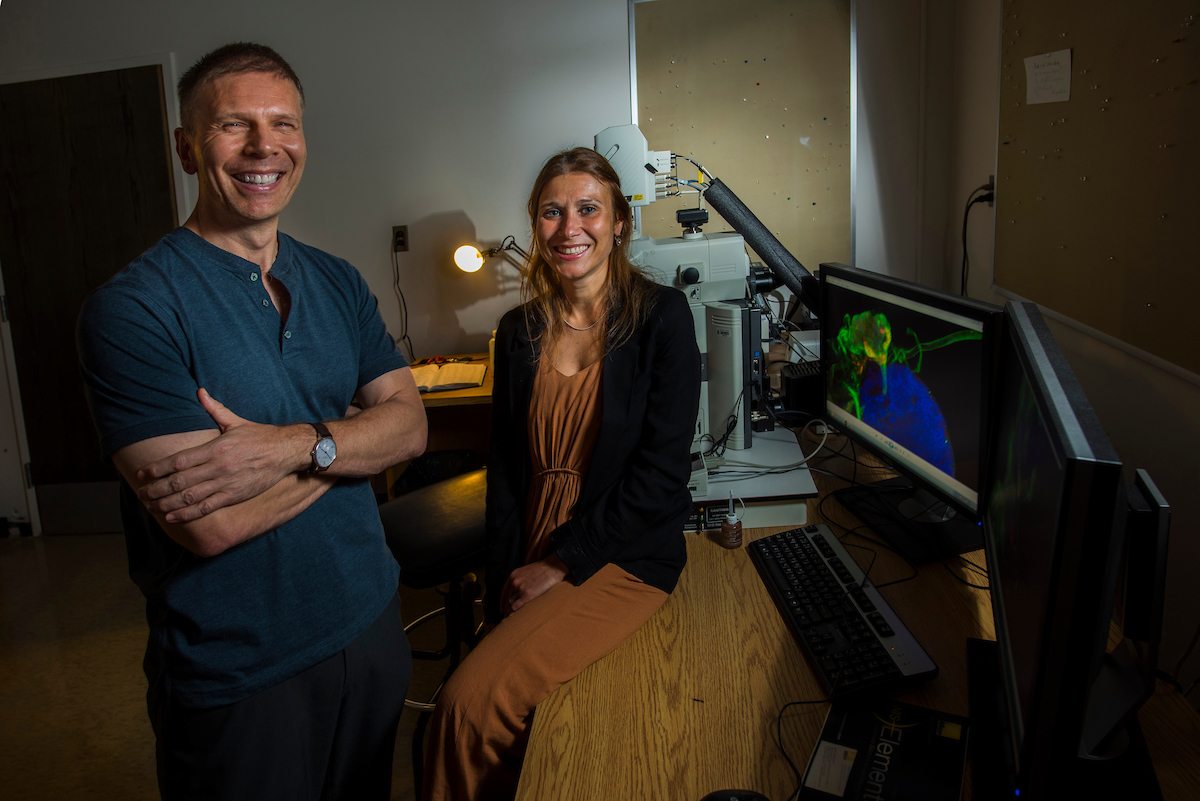
Kirst King-Jones (left) is senior author on a new study examining the body's system for regulating iron. Photo credit: John Ulan
New research shows that the body's system for regulating iron is much more complex than originally thought-and this has surprising implications in at least three human diseases, according to a new study by University of Alberta biologists.
"Having too much or too little iron can be very damaging for our cells. The bottom line is, every cell needs to have strict control over iron levels," said Kirst King-Jones, associate professor in the University of Alberta's Department of Biological Sciences and senior author on the study.
Nearly every living cell on Earth requires iron to survive. In humans, iron is responsible for transporting oxygen in the blood through hemoglobin. It is also involved with the production of steroid hormones, such as estrogen and testosterone, DNA repair, and many other enzyme reactions. "Because it is so versatile, regulating iron in our cells is extremely important," added King-Jones.
A key component of the iron regulation system, a protein called iron-regulatory protein, can switch between two functions. When iron levels are normal, the protein is bound to a type of iron cofactor, commonly known as an iron-sulphur cluster, and in this form the protein is called aconitase. However, when iron levels drop, the protein loses the iron-sulphur cluster, which allows it to regulate specific genes important for the cell's iron levels.
Previously, the aconitase form was not thought to have any role in iron regulation, but the new research indicates that aconitase has a previously undiscovered role in iron regulation. In fact, the study shows that the aconitase regulates genes in the nucleus of the cell, rather than acting as a superfluous enzyme outside the nucleus.
"Our results demonstrate that three diseases-porphyria (also known as vampire disease), Andersen disease, and Wolfram syndrome-are affected by the function of the aconitase and the level of iron in our cells," said King-Jones. "These results have potential implications for the management of these diseases, through managing iron levels."
The research identified two other key components in the molecular iron regulation system, glycogen-branching enzyme and a protein called mitoNEET, both of which play a role in repairing damage to the iron-regulatory protein.
The paper, "Glycogen branching enzyme controls cellular iron homeostasis via Iron Regulatory Protein 1 and mitoNEET," was published in Nature Communications (doi: 10.1038/s41467-019-13237-8).